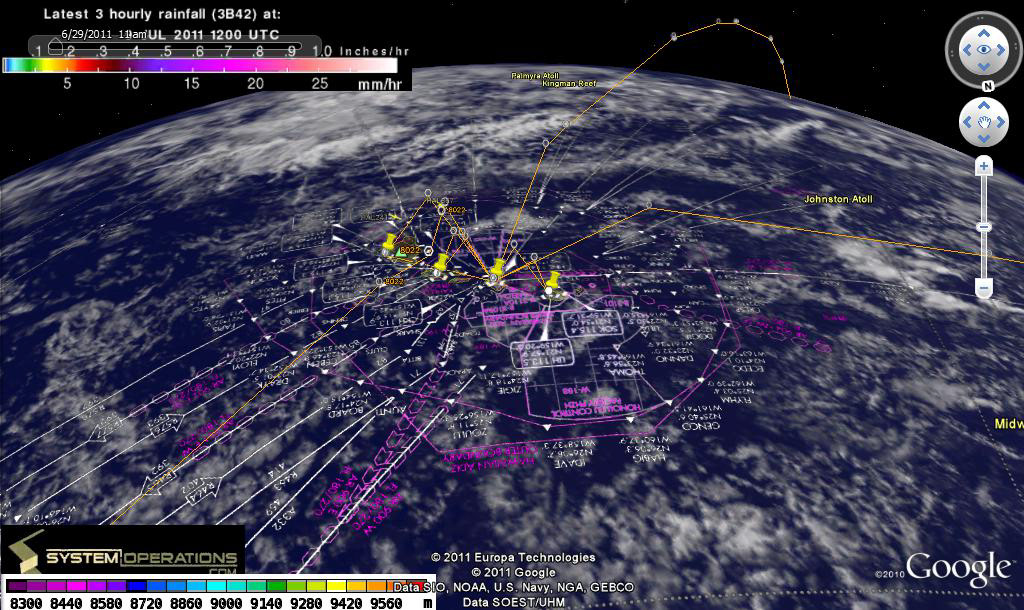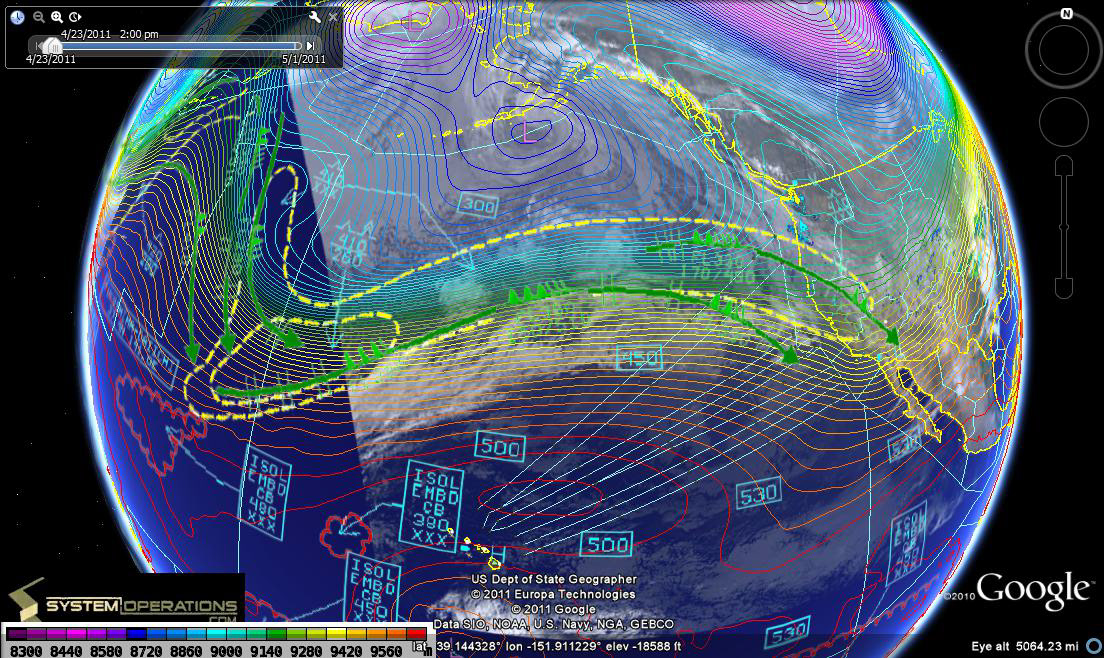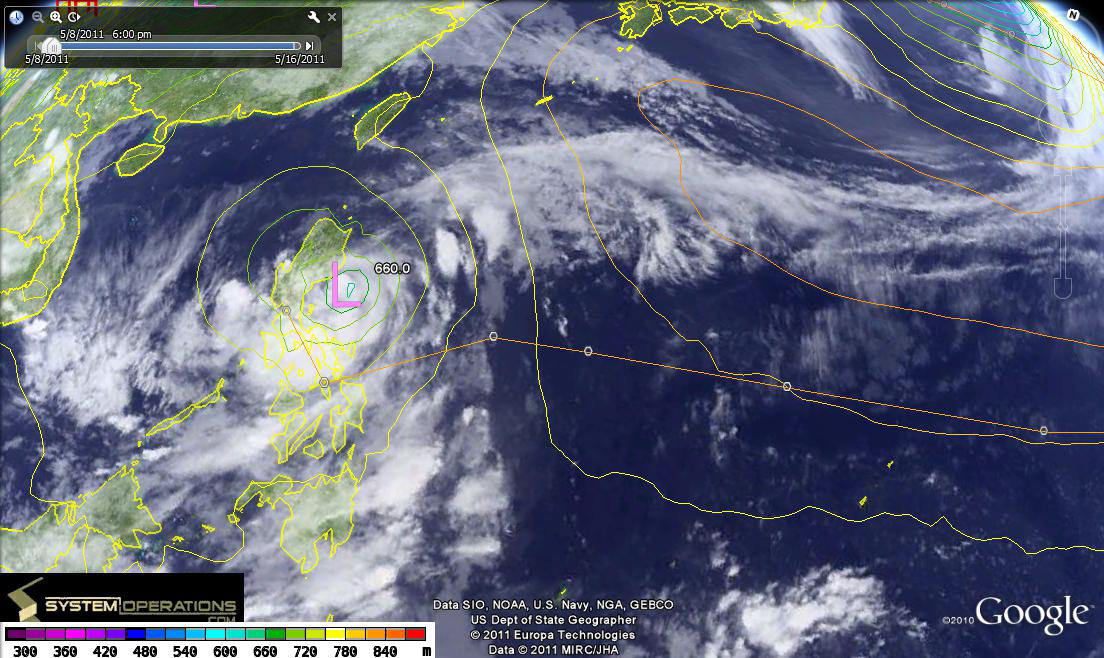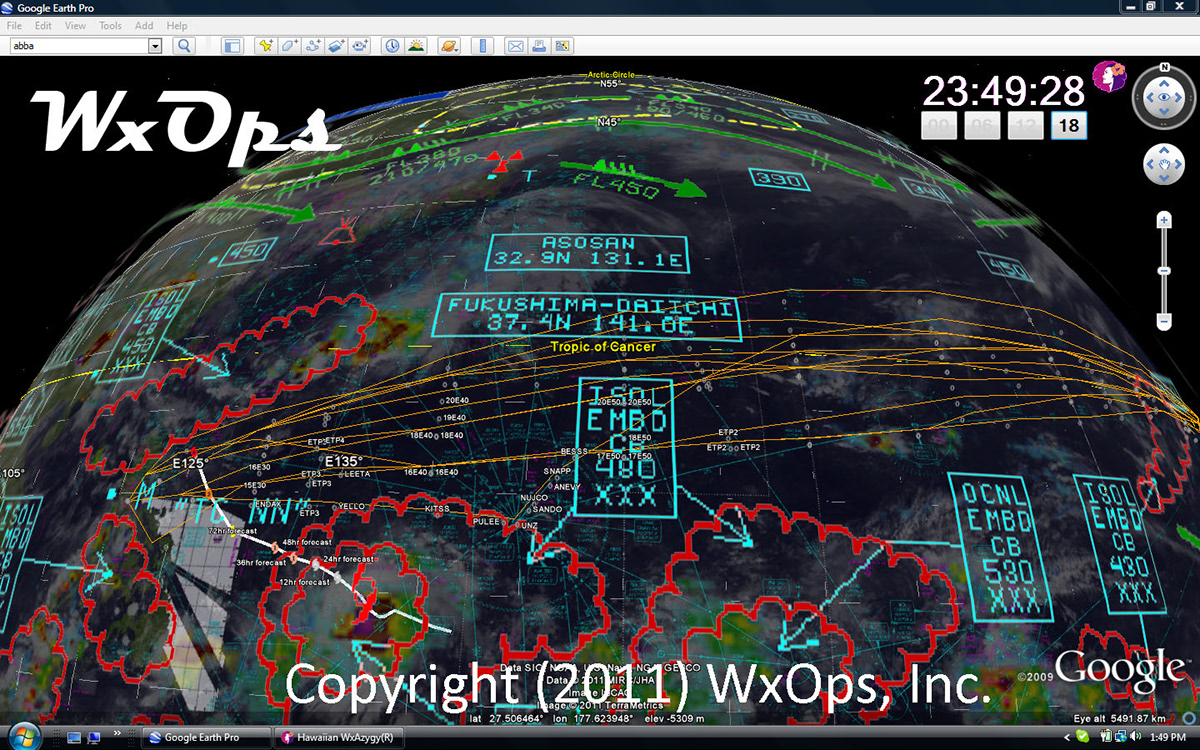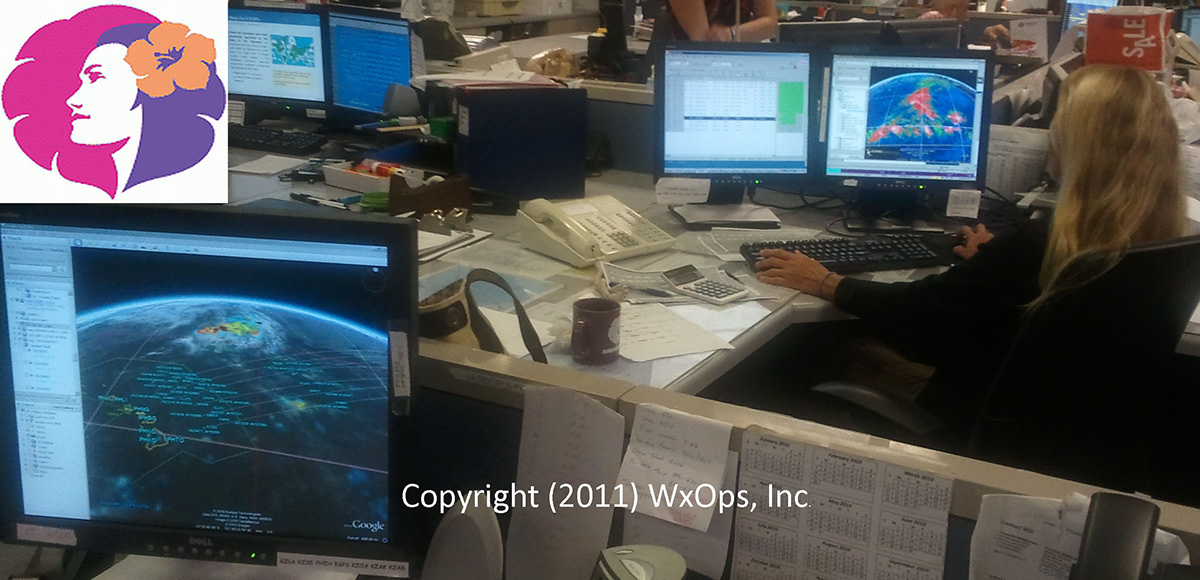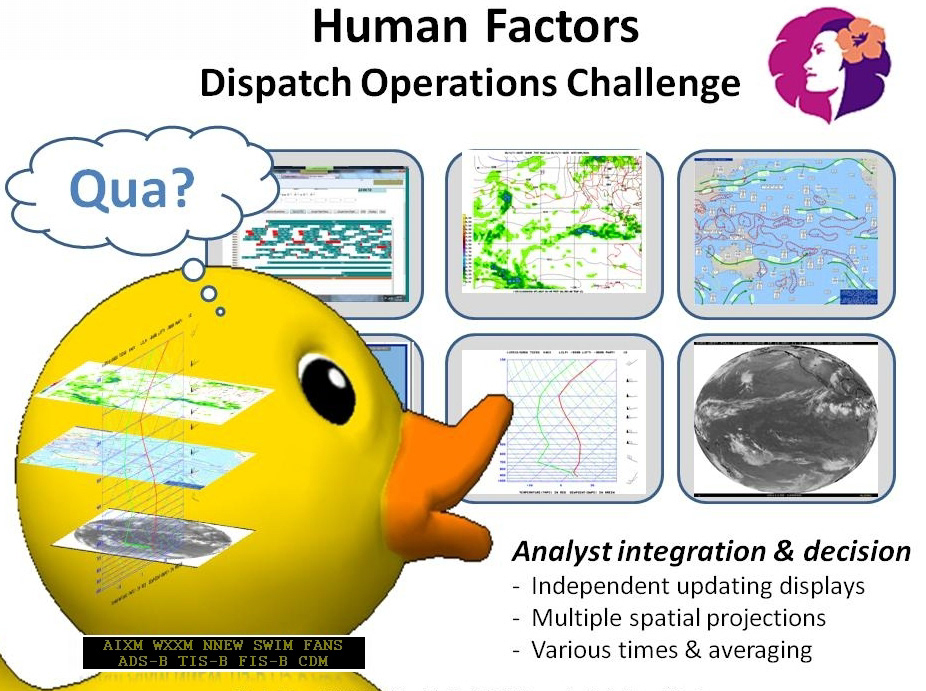NextGen at Hawaiian Airlines
WEATHER
Understanding the state of the Earth's current atmosphere and predicting change.
Increasing ATC capacity is important but that should be only part of the NextGen story. The NextGen weather concepts of a single authoritative source (SAS) and the 4Dwx Cube will assist in managing traffic flows and ATC delay programs but there seems to be a gap in the current scope as it relates to oceanic operations. This gap requires further study and must be closed. For example, Hawaiian Airlines Dispatch experience over the Pacific allows us to assert that current models used for weather prediction correctly predict convection, frontal boundaries, tropical movement, icing and turbulence approximately 70% of the time. Excluding major accidents, the bulk of aviation events and injuries are associated with icing and turbulence encounters where the models fail to predict correctly. As a result, aircraft steer away from adverse weather that doesn’t exist, wasting fuel – or are not protected from sudden and dangerous events that do occur, such as AF 447 and JAL B763 on 10 Feb 2011 (NTSB, 2011.) Weather model predictions are not operationally useful beyond about 36 hours lead time, and new model results are not generally available until 12 hour after model initiation time. This latency, coupled with too few observations over the world's oceans, makes it unclear how existing models could ever completely describe the current state of the atmosphere. The ITT network and Fis-B will offer improvements in delivery of infomation to pilots in the CONUS since NEXRAD and land-based sensors can supplement model data; but this offers little help to aviation over the open oceans. CPDLC will offer some help for oceanic ATC issues but the weather side of the house will still be woefully lacking. To have real impact on climate science and aircraft operations, assimilation of more real-time observational data over the oceans is required. This data should be open and multinational in scope. Data sets could come from: Commercial Aircraft, UAV's, TRMM, CloudSat, MTSAT, JAXA. EUMETSAT and other space assets as required. NNEW and the 4dWX cube are slated to be one of the first deliverables of NextGen, so this gap must be addressed now before we get too far down the road.
HUMAN FACTORS
Process, a common cause
Our work in human factors has been extensive. Our findings show that by embracing GIS techniques, the dispatcher can gain better operational awareness. Overlaying validating data sets and sometimes conflicting sources of data seems to help. More collaboration with industry users and within the DOD, NASA, NOAA and the FAA is needed. Discussions about how ATC, FSS, DOD and dispatchers interact with each other, what data sets they will share with each other, how flight planning systems will integrate into NextGen and how aircraft EFBs and other avionics fit into the mix, must be thought out. More concentration now on user processes, open data standards, and data delivery methods will spark industry innovation and international cooperation in the coming years. With the exception of GPS, CPDLC and ADS-B,C, less emphasis should be placed on hardware for now because by the time Nextgen is mature, most hardware will be obsolete.
TRAJECTORY BASED OPERATIONS
It takes a village.
More cooperative research with ICAO in the early stages about integrating areas outside of the CONUS is needed. New NextGen routing and metering processes should be closely integrated with at least adjacent FIRS. The goal of reducing fuel costs and carbon emissions while allowing for growth applies worldwide. Again, more collaboration between ATC users, PDI's, aircraft dispatchers and airline schedulers on eventual design will result in a much better and safer product. Knowing the schedule of the flights only after they have taken off is not good enough. Knowing the flight is delayed at the gate is really what is required. For the same reasons, more coordination with MNPS, CEPAC, NOPAC, EUROPE and ASIA air traffic systems will also result in a better product. For NextGen to be successful, the US should take the lead in this and build more and better partner relationships.
INDUSTRY INVOLVEMENT
PR - Political releases
Press releases about awards to contractors serves only the contractor's PR needs and each government agency's political aspirations. More emphasis should be placed on stakeholder and user participation, early adopter benefits, the public benefit and industry collaboration successes. Less emphasis should be placed on the contractor and awards process. What we all need to do right now is spark the world's imagination about the capabilities and potential benefits of NextGen. This will not only enhance contractor and government PR, it will at the same time promote innovation and political buy in.
HAWAIIAN AIRLINES
We buy in, but it is a two way street
We commit to working with government and industry to make NextGen a success. We commit to staying informed on unfolding NextGen events as they happen and we wish to actively contribute to this collaboration as long as there is reciprocity and a clear ROI is defined. Better Fuel management and stewardship of the environment is a win win for everybody.
Want to see some of our current work?
See below........
Understanding the state of the Earth's current atmosphere and predicting change.
Increasing ATC capacity is important but that should be only part of the NextGen story. The NextGen weather concepts of a single authoritative source (SAS) and the 4Dwx Cube will assist in managing traffic flows and ATC delay programs but there seems to be a gap in the current scope as it relates to oceanic operations. This gap requires further study and must be closed. For example, Hawaiian Airlines Dispatch experience over the Pacific allows us to assert that current models used for weather prediction correctly predict convection, frontal boundaries, tropical movement, icing and turbulence approximately 70% of the time. Excluding major accidents, the bulk of aviation events and injuries are associated with icing and turbulence encounters where the models fail to predict correctly. As a result, aircraft steer away from adverse weather that doesn’t exist, wasting fuel – or are not protected from sudden and dangerous events that do occur, such as AF 447 and JAL B763 on 10 Feb 2011 (NTSB, 2011.) Weather model predictions are not operationally useful beyond about 36 hours lead time, and new model results are not generally available until 12 hour after model initiation time. This latency, coupled with too few observations over the world's oceans, makes it unclear how existing models could ever completely describe the current state of the atmosphere. The ITT network and Fis-B will offer improvements in delivery of infomation to pilots in the CONUS since NEXRAD and land-based sensors can supplement model data; but this offers little help to aviation over the open oceans. CPDLC will offer some help for oceanic ATC issues but the weather side of the house will still be woefully lacking. To have real impact on climate science and aircraft operations, assimilation of more real-time observational data over the oceans is required. This data should be open and multinational in scope. Data sets could come from: Commercial Aircraft, UAV's, TRMM, CloudSat, MTSAT, JAXA. EUMETSAT and other space assets as required. NNEW and the 4dWX cube are slated to be one of the first deliverables of NextGen, so this gap must be addressed now before we get too far down the road.
HUMAN FACTORS
Process, a common cause
Our work in human factors has been extensive. Our findings show that by embracing GIS techniques, the dispatcher can gain better operational awareness. Overlaying validating data sets and sometimes conflicting sources of data seems to help. More collaboration with industry users and within the DOD, NASA, NOAA and the FAA is needed. Discussions about how ATC, FSS, DOD and dispatchers interact with each other, what data sets they will share with each other, how flight planning systems will integrate into NextGen and how aircraft EFBs and other avionics fit into the mix, must be thought out. More concentration now on user processes, open data standards, and data delivery methods will spark industry innovation and international cooperation in the coming years. With the exception of GPS, CPDLC and ADS-B,C, less emphasis should be placed on hardware for now because by the time Nextgen is mature, most hardware will be obsolete.
TRAJECTORY BASED OPERATIONS
It takes a village.
More cooperative research with ICAO in the early stages about integrating areas outside of the CONUS is needed. New NextGen routing and metering processes should be closely integrated with at least adjacent FIRS. The goal of reducing fuel costs and carbon emissions while allowing for growth applies worldwide. Again, more collaboration between ATC users, PDI's, aircraft dispatchers and airline schedulers on eventual design will result in a much better and safer product. Knowing the schedule of the flights only after they have taken off is not good enough. Knowing the flight is delayed at the gate is really what is required. For the same reasons, more coordination with MNPS, CEPAC, NOPAC, EUROPE and ASIA air traffic systems will also result in a better product. For NextGen to be successful, the US should take the lead in this and build more and better partner relationships.
INDUSTRY INVOLVEMENT
PR - Political releases
Press releases about awards to contractors serves only the contractor's PR needs and each government agency's political aspirations. More emphasis should be placed on stakeholder and user participation, early adopter benefits, the public benefit and industry collaboration successes. Less emphasis should be placed on the contractor and awards process. What we all need to do right now is spark the world's imagination about the capabilities and potential benefits of NextGen. This will not only enhance contractor and government PR, it will at the same time promote innovation and political buy in.
HAWAIIAN AIRLINES
We buy in, but it is a two way street
We commit to working with government and industry to make NextGen a success. We commit to staying informed on unfolding NextGen events as they happen and we wish to actively contribute to this collaboration as long as there is reciprocity and a clear ROI is defined. Better Fuel management and stewardship of the environment is a win win for everybody.
Want to see some of our current work?
See below........
